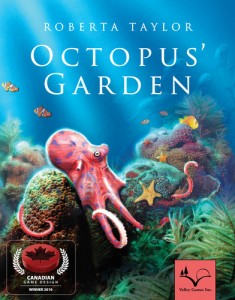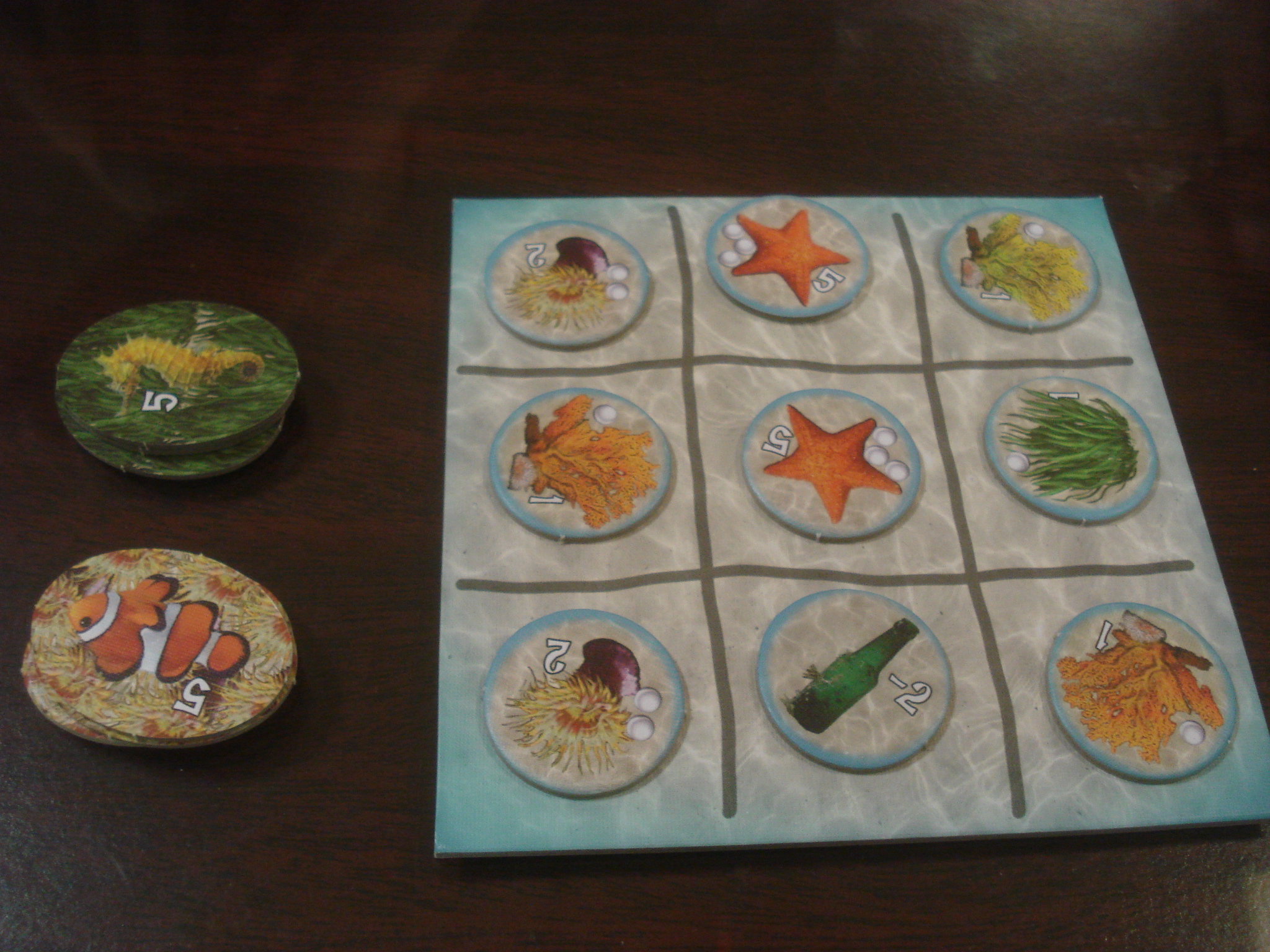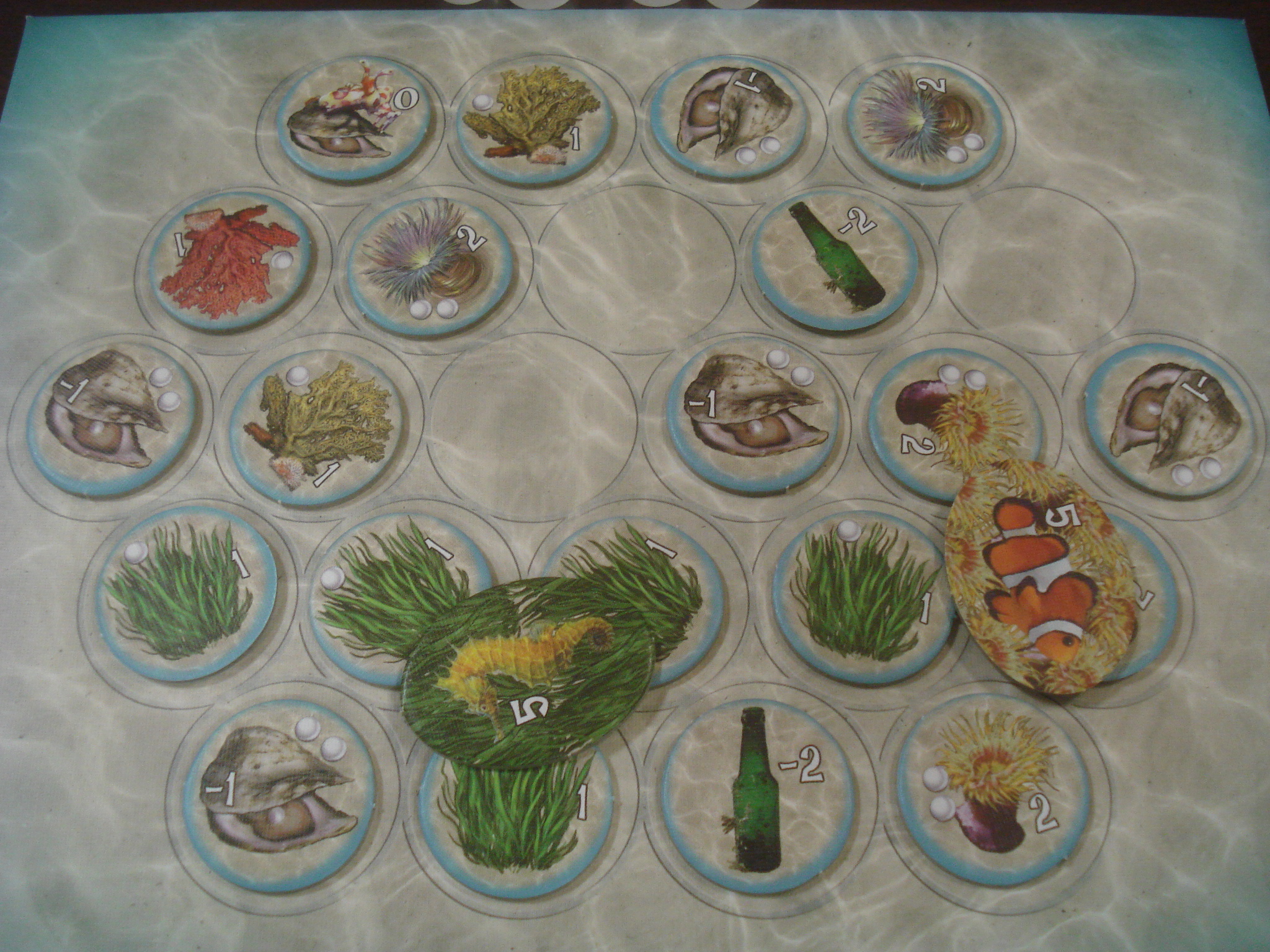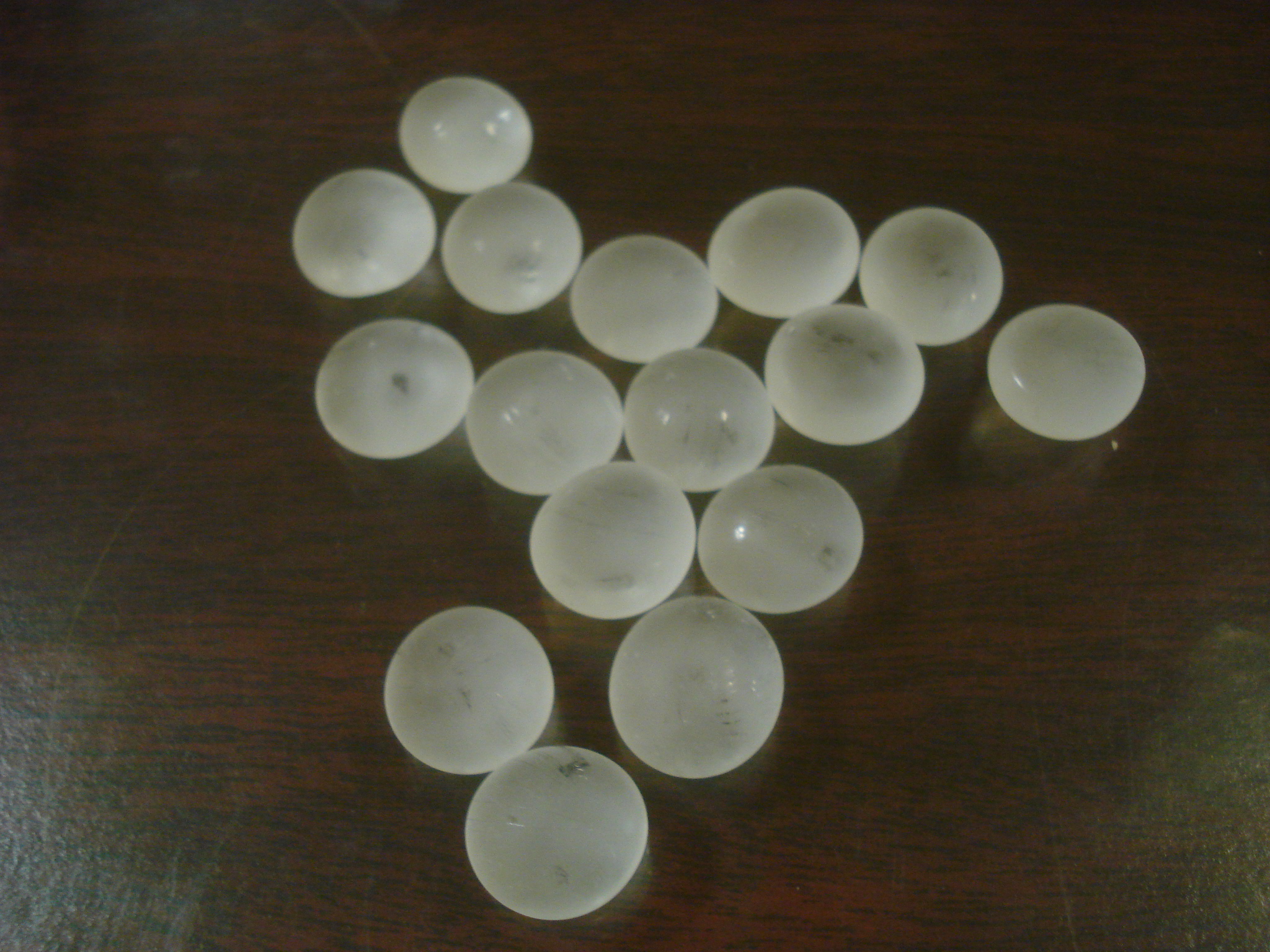| Publisher | Valley Games Inc. |
| Design Credits | Roberta Taylor |
| Art Credits | Mark Poole, Michelle Little |
| Editing Credits | Brian Mola, Rob Bartel |
| Game Contents | Five boards (four Gardens, one Marketplace), 40 Pearls, 128 tiles, cloth draw bag, rules |
| Guidelines | Underwater seascape design |
| MSRP | $34.95 |
| Reviewer | Andy Vetromile |
Depending on who you believe – scientists, seamen, Ringo Starr – octopuses amass collections of debris, perhaps the remains of eaten shellfish, near where they live. Rather than just reference an untidy pile of refuse, they all decided it probably works better as an elegant metaphor. Hence the term, song, and, now, unrelated game: Octopus’ Garden.
The object of the game is to score the most points.
Players start with their own boards – called Gardens – full of adjacent circles arranged in an elongated hexagon; some crystal Pearls; and a few circular Oyster tokens.
The Marketplace, which resembles a tic-tac-toe board, is set up in the middle of the table and each space covered with another token drawn randomly from the cloth bag. Each chit has a picture of a specimen of undersea life, a numeral, and a “price” in Pearls.
On his turn a player can purchase any row or column of tokens from the market, if he has Pearls enough to afford all three, and place them on an open space in his Garden. If there are any Sea Stars in his arrangement, they move one space toward the nearest Oyster. Finally, each Oyster on his board produces a Pearl he can later use for purchases. If he can’t afford anything at the Marketplace, he just moves his Sea Stars and collects Pearls.
Sea Stars have the highest point values in the game but they also have a nasty tendency to eat your Oysters, the source of all your Pearls. You always earn at least one Pearl (this may be the one game where you literally “make” your money), but unless you plan on filling your Garden entirely with the dirt-cheap Coral it won’t be enough. More Oysters means more income, but they’re also -1 to your score at the end; you have to clear a comfortable “salary” while clearing space enough for point-scoring pieces.
There are other denizens of your Garden. Coral is beautiful and can be used to keep Sea Stars away from your Oysters, and beds of Seagrass and Anemones, in sufficient quantities, attract more sea life. There’s also some manmade junk at the bottom of the ocean: Garbage is free and reduces your score, but fanciful Relics build sets that increase in value.
The game ends when someone fills up all the spaces on his Garden with counters, or when the token bag is empty. Whoever has the highest point total wins.
Valley Games has provided excellent components. The counters are thick and the artwork is gorgeous. The little crystals used as the Pearls are a fancy, frosted affair. Both the Marketplace and Garden boards are mounted, the rules are full-color, and they throw in the traditional cloth bag from which to draw new tiles. Even the box is a pretty sturdy item with a simple insert. About the only thing missing is the eponymous octopus – he’s on the box and rulebook covers, but makes no appearance in his own Gardens, the slacker.
There’s a lot of strategy in this compact little package. Scores can vary greatly, and no one combination seems destined to sweep the seabed. Much love went into the graphics, with colorful paintings of the creatures and a wavy pattern like sunlight through a pond on the boards – forget convincing one’s stodgy parents to play, this is the sort of artful recipe even your grandmother might get into. It’s good introductory material for newcomers, though the strategy is probably complex enough to keep it from being an ideal “family” game that puts everyone on the same footing.
With hidden points that keep the ending in doubt and a high replay value, Octopus’ Garden is brief but meaty. There’s something here to like whether one is a veteran or a casual gamer; there’s as much tension playing out on one’s own board as there is between players. Ending the game by emptying the bag is mathematically unlikely in the extreme, so does that signal a potential supplement or sequel? If it does, it will be a welcome one.



